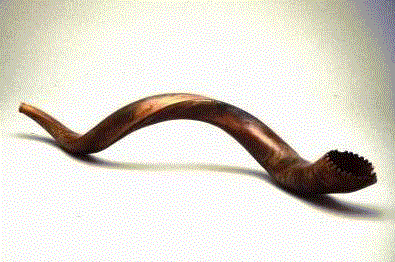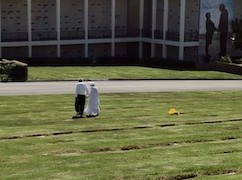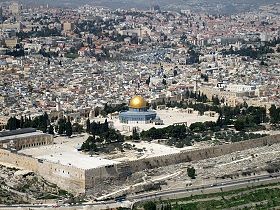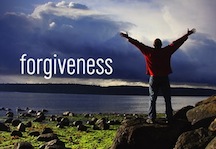By Sam Glaser
 I just returned from my distant cousin Gene Samson’s funeral. I must admit I left my home this morning a bit frustrated that I was going to “lose” half my day and had to wear a black suit on a 90 degree LA scorcher. But as soon as I entered the mortuary I was immediately uplifted by the faces of my extended family and felt the soul-satisfaction of performing the ancient and powerful mitzvah of participating in the burial of a loved one.
I just returned from my distant cousin Gene Samson’s funeral. I must admit I left my home this morning a bit frustrated that I was going to “lose” half my day and had to wear a black suit on a 90 degree LA scorcher. But as soon as I entered the mortuary I was immediately uplifted by the faces of my extended family and felt the soul-satisfaction of performing the ancient and powerful mitzvah of participating in the burial of a loved one.
Gene died at the ripe age of 83 and was a man beloved by all who knew him. He had a winning personality, a great smile and was functioning on all cylinders until he left this world. Funerals for the elderly are bittersweet affairs that can emphasize the humor, anecdotes and legacy of the deceased. We cried for Gene’s widow, children and grandchildren who had clearly lost their patriarch. But our tears were tempered by the awareness that Gene’s was a life fully lived and his departure, at least to me, was a celebration of life, more like a Bon Voyage than a tragic ending.
Rabbi Mark Hyman eloquently led the service and mentioned that the timing of my cousin’s demise coincided with the month of Elul, a time when we introspect in preparation for the imminent High Holidays. Suddenly I was glad that I took the time to leave my recording studio. I guess I was too busy to have an Elul, too obsessed with my self-imposed deadlines to reflect or to make a spiritual accounting. It’s hard to smell the roses with your nose to the grindstone. Rather than hurry back to my workplace I took the time to wander the cemetery with my parents and pay respect at the various graves of our loved ones. I got to witness my dear mom and dad hand in hand, a loving
 couple married for over 50 years, wearing white, exploring the verdant burial ground of our extended family. I got to cry simply because I love my parents so much, because I miss the relatives that have left us, because I’m human and have a God-given need to open my heart and just have a “good cry.”
couple married for over 50 years, wearing white, exploring the verdant burial ground of our extended family. I got to cry simply because I love my parents so much, because I miss the relatives that have left us, because I’m human and have a God-given need to open my heart and just have a “good cry.”
This experience reminded me of an amazing, multi-day lecture I once enjoyed by Rabbi Marc Gafni. He discussed the power of tears and explained how Rosh Hashana is the “capitol” of tears. In fact, nearly every chapter of Torah and Prophets that we read over the holiday has to do with crying, and the rabbi expertly guided us through an exploration of the different types of tears. Perhaps the best exercise during this final month of the year is to relearn how to cry and to examine the inspiration for our tears. To the best of my memory, this is the chronological outline of his talk.
Our first saga in the Rosh Hashana Dance of Tears is the expulsion of Hagar and Ishmael from the home of Sarah and Avraham. It is in this portion that Avraham is told to “do whatever Sarah tells you,” in other words, we are offered the marital survival tactic of saying “yes, dear” to one’s wife. Reluctantly, Avraham sends them packin’ and when the water runs out, Hagar sets her son a bowshot away so that she doesn’t have to hear his cries. She cries her own tears of despondency and remarkably, God doesn’t respond to her but instead hears “the cry of the boy” and only then does their salvation appear. The lesson here: the tears of giving up are NEVER OK. We can and should cry out when we are in pain. But give up? Never.
Next up we have the haftarah of Hannah praying for God to grant her a child. Eli, the high priest sees her mouthing words of her prayer silently and assumes she’s yet another Jerusalem madwoman. When Eli eventually consoles her, she feels confident her prayer has been heard and a year later gives birth to the infant who would become my namesake, the prophet Shmuel/Samuel. The sages tell us that the gates of heaven are ALWAYS open to the tears of earnest prayer. Our job is to exercise our prayer muscle daily so that we are in good practice come Rosh Hashana, and to be emotionally open so that tears can readily flow and open the gates for the prayers of all humanity.
On the second day of Rosh Hashana the Torah brings us the next player in the celestial dance. This time it is Isaac and the scene is the infamous Akeydah, the near sacrifice of Isaac on top of the sacred Mount Moriah. In the interest of brevity let me say that this is one of the most difficult passages to grasp in our canon. At the age of forty,
 Isaac says “Hineni,” (here I am) and seems to be complicit in his own demise. Avraham is asked to destroy everything he has worked for. The midrash tells us that the angels were crying tears of disbelief and awe at the commitment of our patriarchs and that these tears fell into Isaac’s eyes and led to his blindness. These angelic tears are the tears of injury, tears that are real and damaging and stay with us forever. We have all experienced crises, trauma and tragedy. The question is if we let the damage sabotage us or if we rise from the ashes stronger and more deeply connected to our Creator.
Isaac says “Hineni,” (here I am) and seems to be complicit in his own demise. Avraham is asked to destroy everything he has worked for. The midrash tells us that the angels were crying tears of disbelief and awe at the commitment of our patriarchs and that these tears fell into Isaac’s eyes and led to his blindness. These angelic tears are the tears of injury, tears that are real and damaging and stay with us forever. We have all experienced crises, trauma and tragedy. The question is if we let the damage sabotage us or if we rise from the ashes stronger and more deeply connected to our Creator.
The final textual character is in the second day haftorah. Rachel, our mother, is weeping for her exiled children and will not be comforted. She is laid to rest not in the cave of Machpelah with the rest of the family, but on the road so that her grave is a beacon for all those exiles as they return to the Promised Land. Hers are the tears of redemption, the tears spilled over the millennia of wandering and persecution, tears that God carefully collects as we march slowly but surely toward a perfected world.
There’s one more dancer in the Dance of Tears. Can you guess? Did you know that our shofar blasts, the centerpiece of the holiday, are modeled after the tears of Sisera’s mother? “Who is she?” you might ask. Well, Sisera was the Hitler of his day, the tyrannical general with the blood of thousands of Jews on his sword. After one of his conquests, our Jewish heroine Yael waited at her shrewdly erected tent for him to come by. She welcomed him with soothing milk and comfort and then as he slept, drove a tent peg through his temple. The Talmud asks: how did Sisera’s mother cry when her son didn’t return from battle? Long cries, short stuttering rasps or a combination? Hence we have the tekiah, shevarim and teruah blasts of the shofar, just to make sure we cover all the bases. Is that mind-blowing!? Rabbi Gafni commented that the text never divulges Sisera’s mother’s name. She remains “the mother of Sisera” for eternity, in other words, her identity is entirely wrapped up in the accomplishments of her favorite son.
The tears of the shofar are therefore the tears of loss of identity. My friends, losing one’s identity is the antithesis of our task leading up to Rosh Hashana. This is the season to get in touch with who we are, to connect with our deepest selves and to coronate God king in our lives. Unless we stand on our own two feet we can never be counted, we can never be authentic, we are defying the very reason we were given this gift of life. At the end of his life, Rav Zushe was famous for saying that he wasn’t crying because he wasn’t as great as Moses, he was just trying to be the best Rav Zushe he could be. Yes, we must look out for our families and loved ones, but in the end we must stand
 alone. This is the time to make a written accounting of who we are, who we want to be, who we’ve wronged and need to ask for forgiveness. Only when we are at peace with our friends and relatives and in touch with our personal mission can we let the cries of the shofar enter our hearts and tear down the walls of complacency.
alone. This is the time to make a written accounting of who we are, who we want to be, who we’ve wronged and need to ask for forgiveness. Only when we are at peace with our friends and relatives and in touch with our personal mission can we let the cries of the shofar enter our hearts and tear down the walls of complacency.
At Gene’s graveside I sang my Blessing song. He died during Ki Teitzei, the Torah portion when we are introduced to this eternal priestly blessing of peace. I sang it for his neshama (soul) to have an aliyah, a heavenly escalation. I sang it for his grandchildren after I saw that none of them knew how to say kaddish. I sang it for my children for whom I wrote it in the first place. I sang it for my parents who gave me a blessing at the Friday night dinner table as I grew up and continue to bless my life. Most importantly, I sang it for myself, to connect to my personal destiny and to ingrain within myself that I can’t run from opportunities to share God’s blessing, even when I don’t want to take the time to put on a suit on a sweltering day.